Introduction
In the quiet space of the museum, each cultural relic carries the weight of history and the depth of culture.
However, when the representative of modern technology, the LED screen, quietly enters the museum, a question can’t help but make people think deeply: Is it an “intruder” that breaks the tranquillity, or a “helper” that enhances the experience?
Table of Contents
1. Why do museums have extremely high requirements for atmosphere?
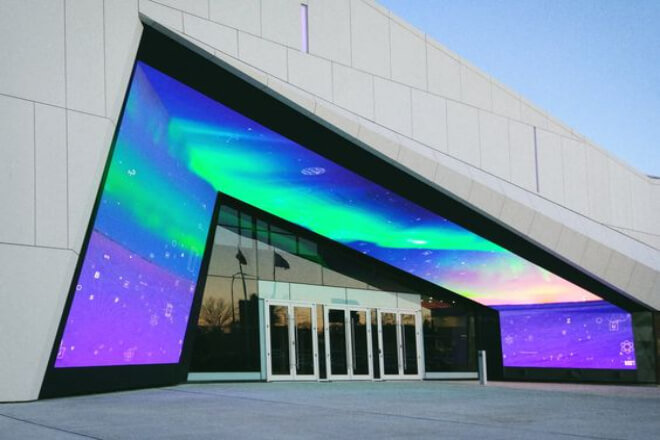
Cultural relics are not ordinary things; they have history and a cultural background.
A good atmosphere is like putting “costumes” on cultural relics, making them more present.
With softer lights and a quieter environment, people will naturally respect these old objects more and be more easily attracted by the stories behind them.
You go to the museum, not just to see what’s in the glass cabinet, right? Everyone hopes to feel the breath of history.
Lights, sounds, colours, and even the temperature and humidity in the air can help you “walk into” that era better. Without these, the exhibition would have looked bland and had no feeling.
Lighting is not turned on casually; it has to find the right “spotlight” for the exhibits, so that the details are clear but not dazzling.
The changing light and shadow can also create an atmosphere, making you feel that there are stories flowing in the exhibition hall.
Soft background music or ambient sound effects can make you more relaxed and more focused.
The colour of the exhibition hall is also particular. Darker colours make the space feel calm, while lighter colours make people feel comfortable and bright.
In this way, your mood will change when you visit the exhibition.
Cultural relics are afraid of moisture and heat. Museums must ensure their safety, and the temperature and humidity must be well-controlled.
This not only protects the treasure but also makes visitors feel less stuffy or dry and allows them to better enjoy the whole process.
2. Will the LED screen really "destroy the atmosphere"?
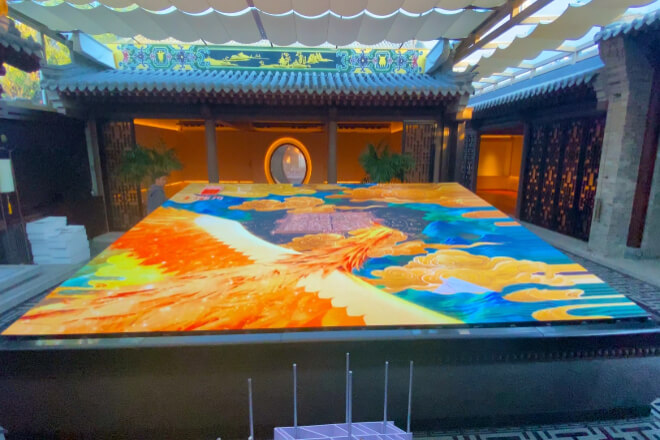
When many people hear that LED screens are used in museums, their first reaction is “this doesn’t fit, it’s too bright and dazzling, and it will destroy the quiet and solemn atmosphere.” In fact, there are many misunderstandings.
Myth 1: LED screens are synonymous with strong light and cool animations
In fact, the brightness and content of LED screens can be adjusted, and it is not necessary to use those glittering and dynamic effects.
Many high-end exhibitions use LED screens to show the details of cultural relics more delicately or play immersive images to help the audience better understand the exhibits.
Myth 2: LED screens represent commercial sense
People often associate LED screens with billboards and shopping malls, thinking that they are “too commercial” and not suitable for cultural places such as museums.
However, LED technology is just a tool, and the key is how to use it. A properly designed LED screen can improve the quality of the exhibition and bring a modern and interactive experience.
Of course, the real problem lies in the way it is used. If the LED screen is set arbitrarily, too bright and noisy.
Or the content is completely inconsistent with the theme of the exhibition, it will definitely affect the audience’s feelings and destroy the overall atmosphere.
The key is to plan and design it reasonably and turn it into a part of the “service atmosphere” rather than a distraction.
Therefore, the LED screen itself is not a “bad thing”. The key is how the designer uses it, whether it can be integrated with the exhibition atmosphere, and help the audience better enter the historical or artistic world.
3. From the perspective of the audience, what benefits can the LED screen bring?
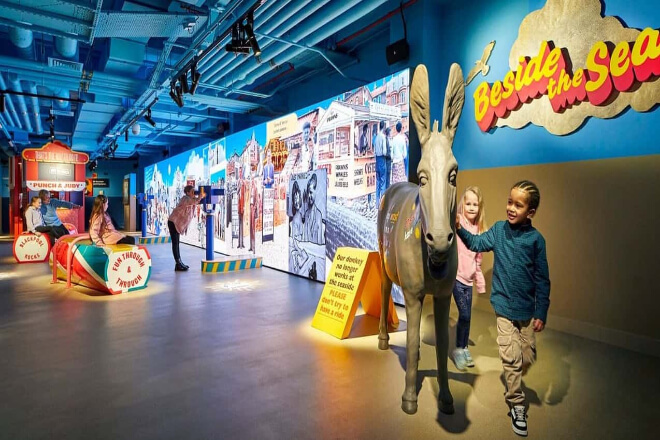
1). Provide richer auxiliary explanations and interactive experiences
The LED screen can play high-definition pictures and videos, and some can even be interactive, so that the exhibition is no longer a rigid text and pictures.
For example, when introducing an ancient artefact, the screen can play its production process animation, and the audience can understand it at a glance.
It is much more vivid than simply reading the instructions and is easier to be attracted to.
2). Make up for the shortcomings of audio guides and paper instructions
The audio guide is sometimes too simple or unclear, and the paper instructions are often too long and tiring to read.
The LED screen can play pictures, videos and sounds at the same time. The audience can choose the method they like, and can also click on more details and “play back” at any time. The information is more comprehensive and more convenient.
3). Multilingual and barrier-free information allows more people to understand easily
People who come to the museum come from all over the world, and language differences are a big problem.
LED screens can switch between multiple languages, and also support subtitles and enlarged fonts.
Some can even cooperate with barrier-free equipment to help people with special needs easily enjoy the exhibition and feel respected.
4). The content is updated in real time and will never be “old-fashioned”
The content of traditional display boards is fixed once they are made, and it is very troublesome to update.
LED screens can be adjusted at any time. Once there are new exhibits or activities in the museum, the information will be put on it immediately.
In this way, the audience can see the freshest and most interesting content every time they come, and the experience will be better.
4. What type of LED screen is suitable for museums?
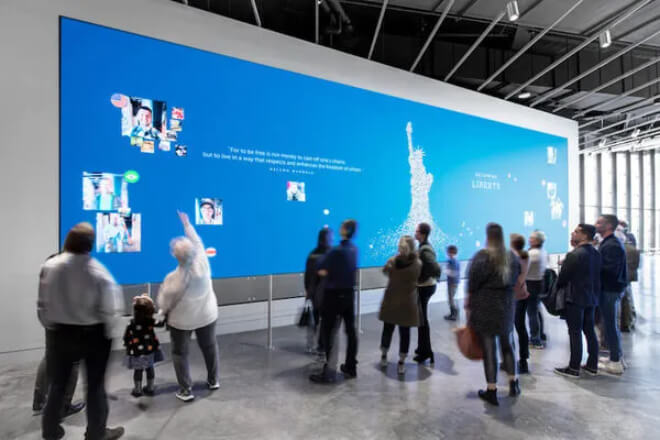
1). Small-pitch high-definition LED screen
When exhibiting artifacts or manuscripts with exquisite details, it is often necessary to enlarge the screen to show their craftsmanship or texture.
It is recommended to use small-pitch LED screens such as P1.2 and P1.5, which have high resolution and accurate color reproduction, and are suitable for close viewing.
Many historical museums and art galleries often use this type of screen to create a “digital magnifying glass” effect, so that the audience can feel its exquisiteness without getting close to the artifact.
2). Curved/special-shaped customized screen
Science and technology and natural museums often use LED special-shaped screens to create a “scene-based” exhibition atmosphere.
Such as using curved LED screens to form a “cosmic corridor”, “deep sea channel”, “volcanic eruption center”, and so on around the space.
This type of screen is mostly customized, with a flexible structure and high installation difficulty, but it has a strong sense of immersion and is suitable for theme pavilions and special exhibition halls.
3). Floor interactive LED screen
The floor LED interactive screen can interact with visitors through pressure or infrared sensing.
For example, simulate the effect of “stepping on dinosaur footprints” in the dinosaur exhibition area, or simulate “water waves” in the natural museum.
This type of LED floor screen needs to have anti-slip, anti-collision, waterproof, and other structural characteristics, suitable for parent-child interaction areas or immersive experience exhibition areas.
4). Transparent LED window screen
Many museum showcases are not suitable for the direct installation of traditional display devices. In this case, transparent LED screens can be used.
It is installed behind the showcase glass or window, which will not block the view of the exhibits, and can also superimpose graphic descriptions or AR effects.
It is suitable for dual information display that needs to present “physical objects + materials” at the same time.
5. How do you make the LED screen "integrate" rather than "disturb"?
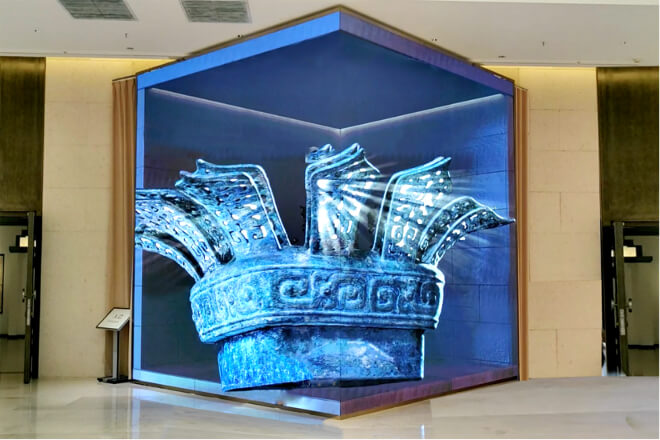
If you want the LED screen to exist in the museum without being abrupt, the key is to make it part of the environment rather than stealing the limelight from the cultural relics.
First, the style of the content played on the screen should be consistent with the cultural relics themselves and the overall exhibition context.
Do not use too fancy or cool effects to avoid making people feel that the picture jumps out and affects the immersion.
Secondly, the dynamic content should control the rhythm, not flash frequently or switch too quickly, and keep it concise and clear so that it is more like helping the audience to explain, rather than disturbing.
For example, the slowly appearing text description and the soft picture transition will make people feel natural and comfortable.
In addition, the design of the LED screen should be coordinated with the booth and lighting system.
The changes in light and darkness of the light, as well as the brightness and the position of the screen, should be considered simultaneously to ensure the overall visual harmony and prevent the screen from appearing abruptly.
Finally, it is also important to support silent mode and automatically lower the brightness at night.
For example, after the exhibition, the screen automatically dims or mutes to avoid interfering with cleaning or maintenance work, and also protects the eyes of the cultural relics and the audience.
In this way, the LED screen not only plays to the advantages of modern technology, but also will not destroy the overall atmosphere of the museum, truly “integrating” into the environment and enhancing the visiting experience.
6. Actual case analysis
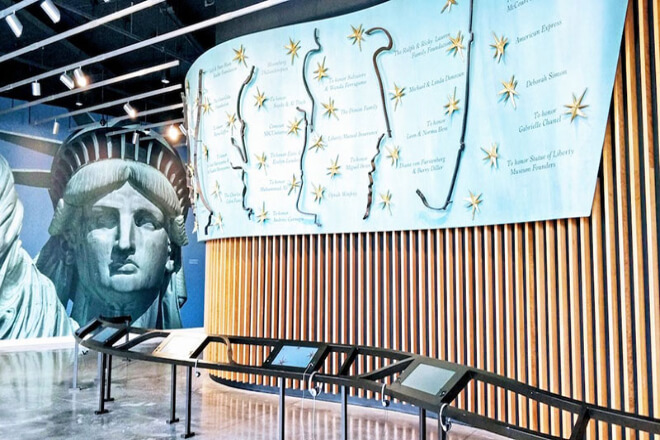
1). Metropolitan Museum of Art in New York: Interactive LED Guide
The Metropolitan Museum of Art uses interactive LED screens to provide visitors with detailed explanations and high-definition image displays in multiple languages.
The screen interface design is user-friendly, and visitors can freely choose information content according to their interests, making the experience more personalised and immersive.
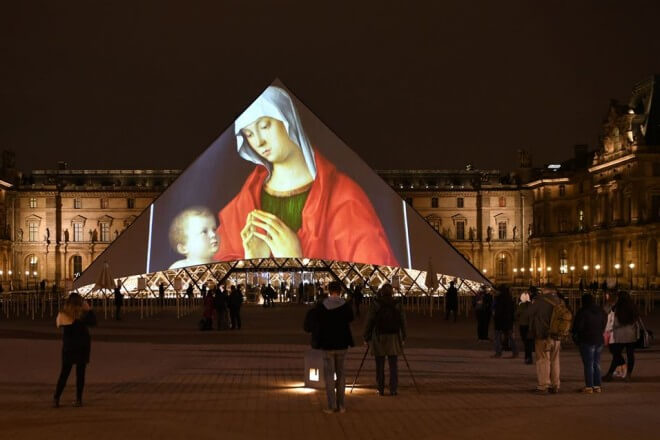
2). Louvre Museum: LED display integrated with the environment
The Louvre uses small-pitch, low-brightness LED screens in some digital exhibition halls.
The screen design is cleverly integrated into the exhibition hall structure, and with soft lighting, it creates a calm and professional atmosphere.
LED screens are mainly used to assist in explanations and dynamic displays, enhancing the visual richness of the exhibition without destroying the sense of history.
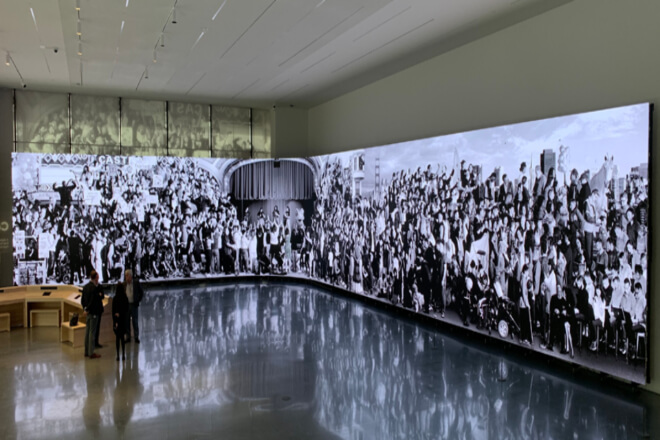
3). San Francisco Museum of Modern Art (SFMOMA): Combination of Art and Technology
SFMOMA uses LED screens to create an immersive interactive experience. The screen content has a slow rhythm and focuses on the unity of visual simplicity and artistic style.
The screen design is synchronised with the exhibition hall lighting and supports mute and automatic dimming functions to ensure that the audience focuses on the artwork itself.
7. Conclusion
Through in-depth analysis, we found that LED screens are not “destroyers” of the museum atmosphere, but “guardians” with great potential.
The key is to skillfully use this technology to perfectly integrate it with cultural relics and exhibitions. The future of museums may be a journey where tradition and modern technology go hand in hand.
Finally, if you want to know more about LED display screens, please get in touch with us.
